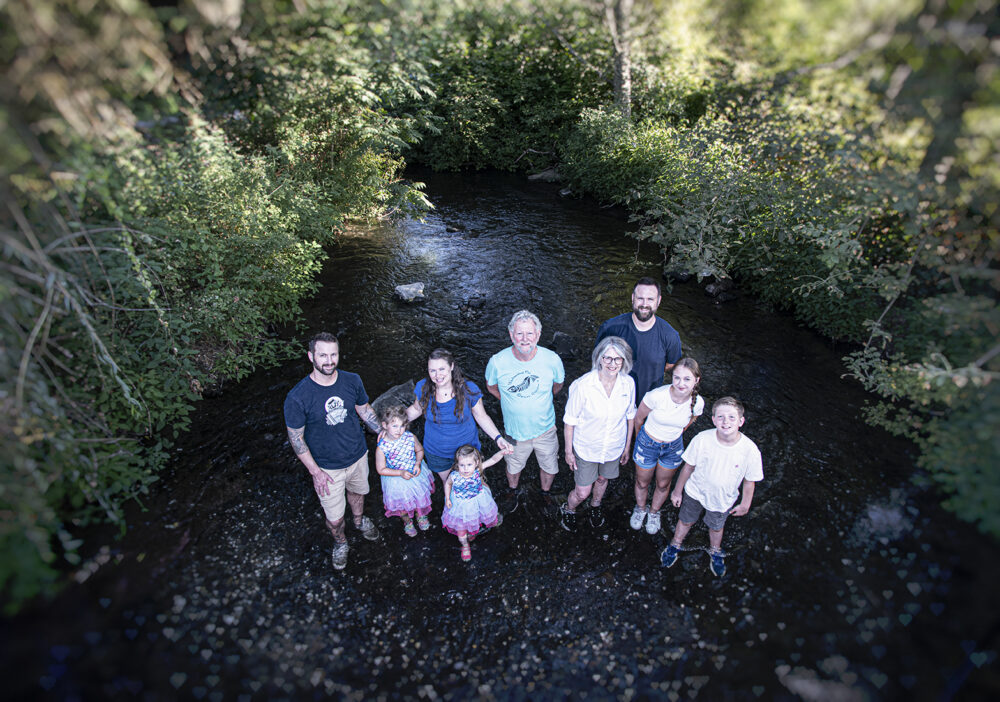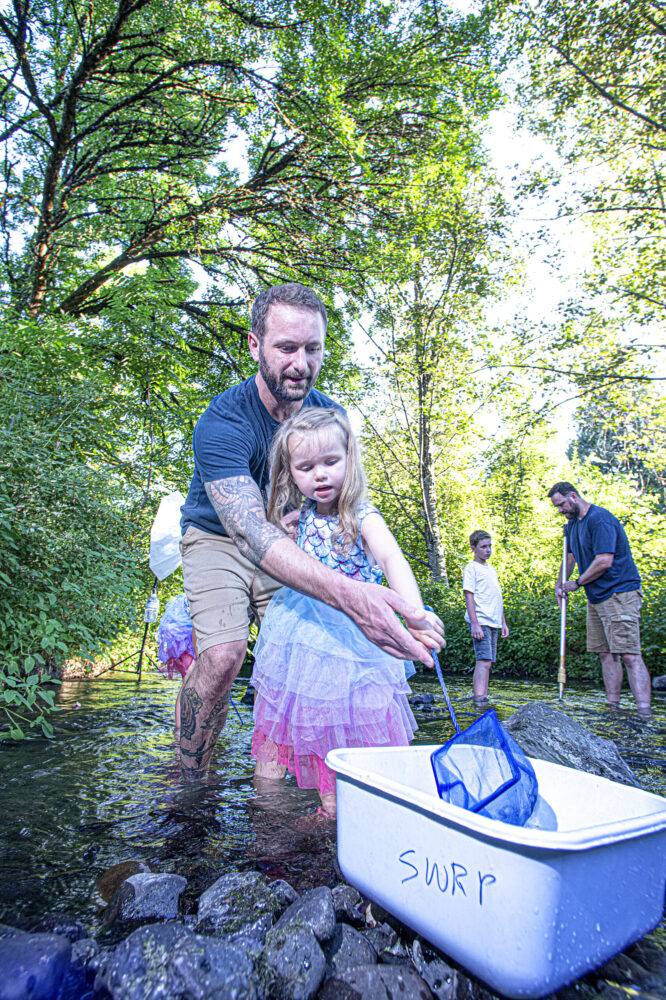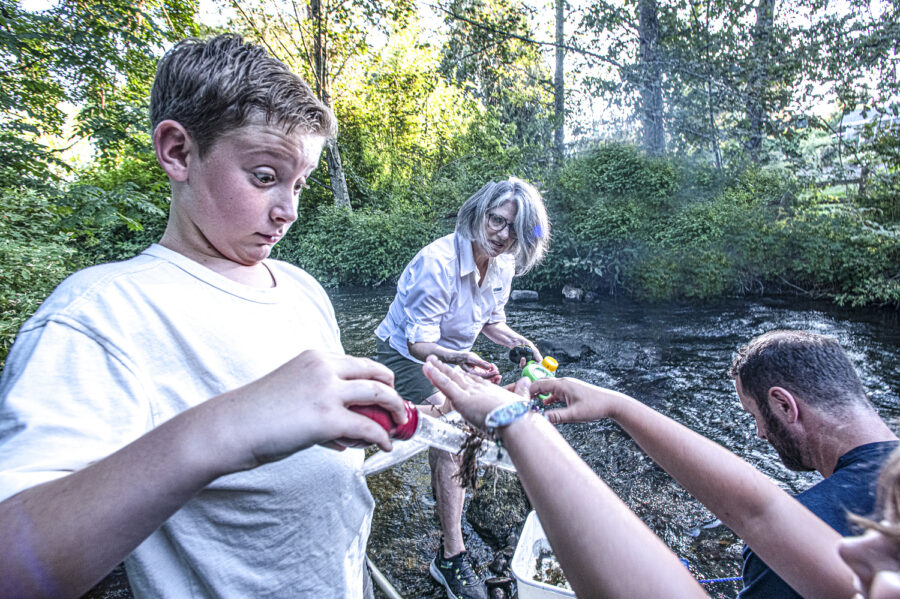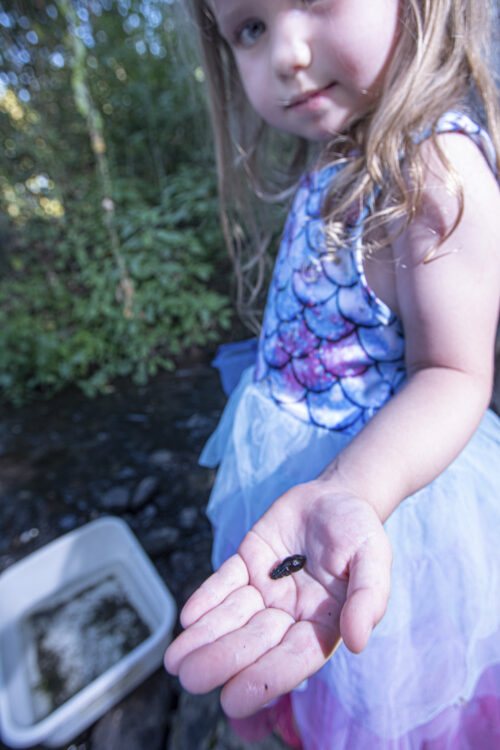Much of the 26 mile long Johnson Creek watershed lies within the Portland Metropolitan area. The watershed has long been caught on the one hand between a very urban environment, and on the other hand, a public role as reclaimable wilderness- one of several large scale green projects (like Forest Park) that makes Portland famous.
Johnson Creek watershed boasts numerous public green spaces, several large scale creek restoration projects, a wildlife refuge, a rhododendron garden, a botanical garden, and a 21 mile long bicycle and pedestrian trail that follows the creek. And it boasts a slowly returning salmon population.
But the watershed also chafes under the burden of toxic runoff from paved streets and upstream agricultural land, from increasing stream temperatures (adverse to spawning salmon) and flooding.
Over the past fifteen years, I have watched the recent history of Johnson Creek unfold from a vantage as volunteer photographer for Johnson Creek Watershed Council (https://www.jcwc.org). I’ve photographed some inspired JCWC campaigns. Some have involved the community in creek cleanup events, some in citizen science programs (including inventories of salmon, beaver and amphibia), and some in the full-scale redesign of large sections of the creek, in coordination with the City of Portland. And a new program will attempt to reach out to future generations- a Legacy Giving program designed to encourage supporters to include JCWC in family wills and trusts. Combined, all these ideas have led to a steady improvement in Johnson Creek’s health and sustainability.
Mary Ann Schmidt, past JCWC board member and part of a team developing the Legacy Giving program for JCWC, had a unique photo shoot in mind to visualize the program. Since the 1980’s, Mary Ann had been a passionate leader in hands-on, field based environmental education programs. She helped launch 1000 Drops, a site-based watershed curriculum delivered in 15 elementary schools. She championed creating wildlife habitat on school grounds as a venue for expanding classroom environmental studies into the field. Mary Ann designed and conducted a Service Learning Workshop and Watershed Tour of the entire Johnson Creek Watershed, bringing together over thirty teachers and community partners to create expanded field-based learning opportunities for their students. Her resume is long, but centers on a simple idea: caring for the landscape where we live is generational, and needs to be passed down. It is a central idea behind the Legacy Giving Program.
Hence the idea behind the photo shoot: we’d place Mary Ann’s own family, three generations of Schmidt’s, into the creek, and give them a chance to get in touch with the water. That August evening, the air temperature lingered around 100 degrees, while the water temperature of Crystal Springs- a tributary of Johnson Creek- beckoned at around 67. The cool water was like a magnet. Mary Ann’s husband Bob, two sons and their families- including four grand kids- waded into the creek.
Water play quickly turned into an informal biology workshop. For the next two hours, Mary Ann’s family began to investigate a swiftly flowing, ten inch deep section of Crystal Springs near Sellwood. The oldest grand kids overturned rocks in the creek bottom, and loosened mud with their tennis shoes to stir up macroinvertebrates. The youngest grand kids used turkey basters to gather samples. Mary Ann provided hand held sampling scopes to magnify what emerged from the silty waters: Asian clam shells, snails, a few Small Minnow Mayflies, Net-Spinning Caddisflies, Case Maker Caddisflies, Scuds and Flatworms were identified.
The kids put their own spin on the hands-on science. The bottom churning became a new dance step executed by Mary Ann’s oldest granddaughter. Overturning rocks and examining them for Flatworms and snails resembled unwrapping packages on Christmas morning.
Adults and kids alike celebrated the feeling of discovery. While they explored, Mary Ann’s grown sons remembered finding the same “creek creatures” when they were the age of the grand kids; the grand kids gaped wide-eyed when coming face to face with Small Minnow Mayflies, which, incidentally, can be an indicator of water quality and temperatures that can sustain a healthy creek biology. JCWC, for the record, supports systematic macroinvertebrate sampling across the long reach of Johnson Creek and its tributaries, an important part of its commitment to monitor and improve creek water quality. That water quality is crucial to healthy salmon habitat.
Mary Ann’s family stayed in the creek that evening until the light dimmed and the temperature began to drop. Part picnic, part science experiment, part generational time machine, the family outing on Crystal Springs dramatized the idea of the Legacy Giving program for a future public launch.









